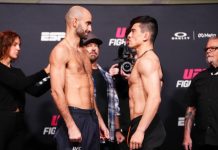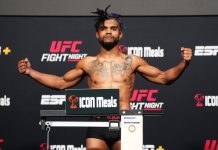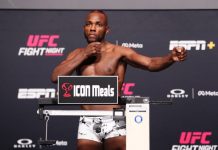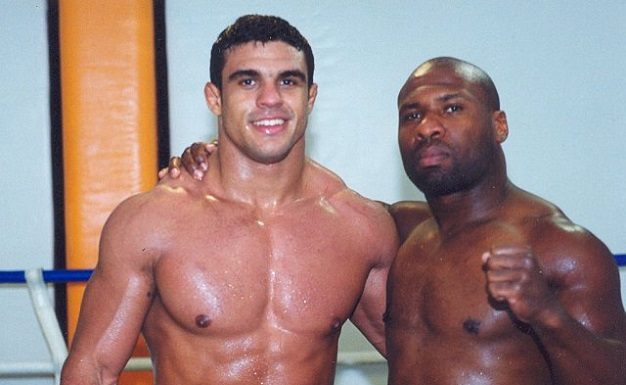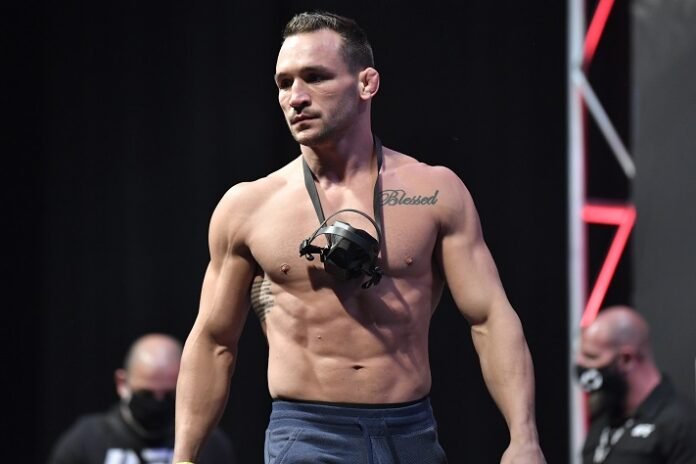
I don’t remember where I was when I originally watched Michael Chandler vs. Eddie Alvarez in their first go-round. I definitely remember where I was the second time I saw the 2011 Fight of the Year (from a few outlets, at least), however.
Chandler’s masterpiece at Bellator 58 in 2011 is an all-time classic. It embodied the best Bellator had to offer at the time, and remains to this day one of the standout moments of the promotion. Eddie Alvarez was the established veteran at that point, having fought in Japan, won gold in Bellator, and earned his “Underground King” nickname.
As gritty as Alvarez was, Chandler was the clean cut, undefeated, model-esque upstart, all of eight fights into his career when the pair first met. Albeit with a record of 8-0.
The war that ensued, with Alvarez giving as good as he got until Chandler managed to score a submission in round four to claim lightweight gold, was exactly what Bellator needed at the time. It propelled Chandler into the spotlight. It proved the company could put on fights as good as the UFC, and sometimes better. It allowed Chandler to become the face of the organization for years.
And I still don’t remember where I was the first time I watched it. But I definitely remember the second, because I came to appreciate that fight even more.
Some fights become even more entertaining upon repeat viewing, and the Bellator 58 main event was one of those. The promotion knew they’d caught lightning in a bottle, and wound up airing encore presentations of that fight more than once (as well as dropping it on Youtube, Facebook, and any other social media channel they could find) over the years. So a few months after that November date, in early March 2012, I wound up watching that fight for the second time, and was struck by just how good it really was.
I probably shouldn’t have been watching it, mind you. Eight hours from home, visiting a long distance partner, in the dead of “still winter” in Elliot Lake, Ontario (where the seasons are almost winter, winter, still winter, and summer), I was ignoring a girl far too cute to be putting up with my B.S. to watch a fight I’d already seen.

Yet I watched it anyway. Because it was that damn good. Heck, it even caught her attention in the end. And it prompted two immediate questions: what would the rematch be like? And how would Michael Chandler fare in the UFC?
The rematch question was answered two years later, with Alvarez winning a split decision in another wildly entertaining fight before making his exit (not without controversy) for the UFC. One of the biggest shames in modern MMA is that a rubber match never saw the light of day.
As for Chandler in the UFC, it has taken us until 2021 (yeah, sure, fine, whatever, he signed in 2020 and weighed in as a back-up at UFC 254, but no one is counting that, Mr. Technically Correct) for “Iron” Mike to finally make it to the promotion.
It’s about time. Pretty much literally. Time is what it is all about now for Michael Chandler. And timing. His years of being the face of Bellator MMA provided him a certain amount of stardom, but it also ate up the bulk of his prime. At 34 years old, Chandler is about to exit his prime, and he has precious little time to go on a run at the UFC title.
He also has a very small window to live up to expectations. Not that such things should matter — it’s the fight, the opponent ahead, that should matter to an athlete. But in terms of dollars and cents, first impressions for a crossover star like Chandler most certainly do matter. While Michael Chandler the fighter may ignore that, Michael Chandler the businessman will not.
So when he enters the octagon at UFC 257 on Saturday night to make his debut against Dan Hooker, expect a certain sense of urgency. Maybe it won’t show outright, but Chandler is well aware of the limited window he has to prove what he has always believed: that he can compete with, and beat, the best lightweights in the world.


